Along with a cherry tree, raspberries must be present on the garden site, having high yields, unsurpassed taste and benefits. Breeders tried to expand the range of existing varieties, classified by maturity, tall bushes, the shape of berries, adding such a parameter as color. Currently, fruit raspberry markets have been conquered by black raspberries, which is distinguished by the color of ripe berries.
Material Content:
Varieties of black raspberries: description
The perennial shrub, originally from North America, is represented by arched shoots up to 3 meters high with sharp spikes. A distinctive feature of the drought-tolerant plant, in addition to the color of the berries, is the absence of root shoots and undemanding care.
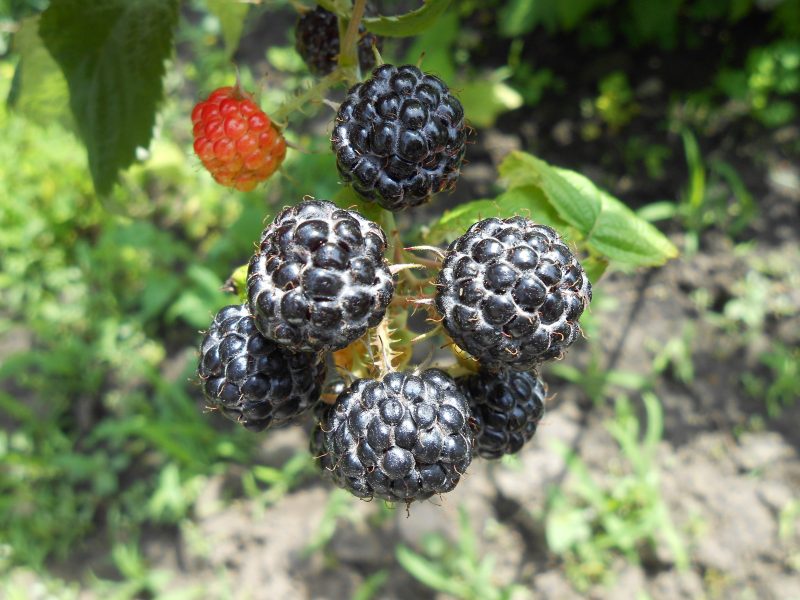
Among the popular varieties stand out:
- Cumberland - a high-yielding and frost-resistant variety of early ripening. Black raspberries "Cumberland", whose bushes are similar in shape to blackberries, took a leading position among other varieties. The average yield from the bush is 4 kg of berries with a blackberry flavor.
- Black Jewel - mid-season productive variety, reaching a height of 2.5 meters. Has erect stems. The pulp is sweet, each weighing 2-2.5 g.
- "Bristol" - Another high-yielding variety with juicy berries, showing excellent results over the years. However, inferior due to low frost resistance and susceptibility to anthracnose.
- "Ugolok" - an early ripe variety represented by bushes with arched shoots. With proper care, the variety shows good yields of small, juicy berries with a sweetish-sour taste.The variety description emphasizes its good resistance to damage by harmful organisms and tolerance of frosts.
Preparatory work before landing
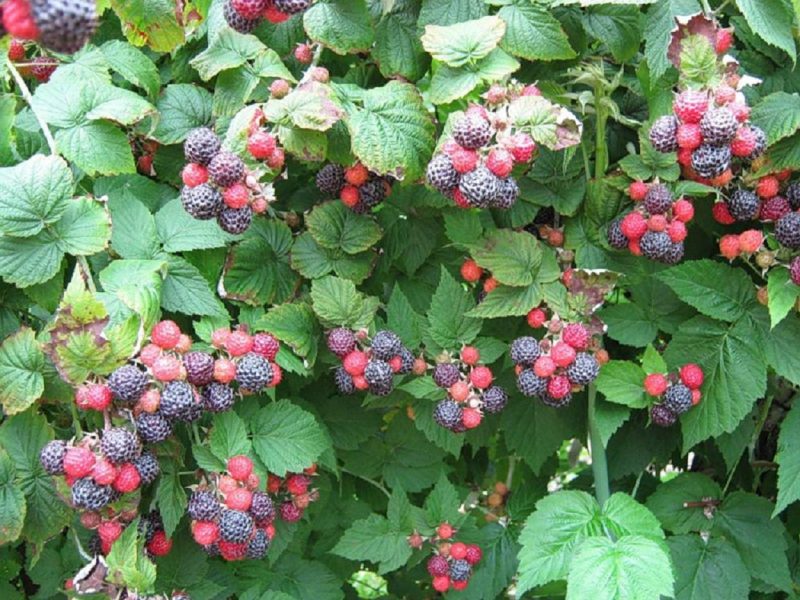
Black raspberries, characterized by undemanding and good survival, will demonstrate the best results only with a competent approach to planting:
- Place Selection - for aronia raspberries, sunny, drafts protected from drafts are selected, on which solanaceous crops (tomatoes, potatoes, eggplants) were not cultivated last season.
- Soil preparation - if the soil is poor and heavy in a suitable area, then peat, sand and humus should be added before digging, which will improve breathability, drainage and fertility of the arable layer.
Planting bushes in the open ground
Black raspberries are planted in early spring.
- Pits 50x50 cm in size are excavated with a distance of 80 cm and a row spacing of about 2 m.
- If the soil was not prepared in advance, then a 20 cm layer of mixed in equal proportions of wood ash and humus is placed in each planting pit.
- Water is poured into the recess, and a sapling with straightened roots is lowered.
- When water is absorbed, raspberries are covered with a substrate from the extracted earth, a small amount of sand and complex mineral fertilizers.
Attention! For regions with a mild winter climate, autumn planting is permissible, in which the culture goes into winter with an underdeveloped root system.
Black Raspberry Care
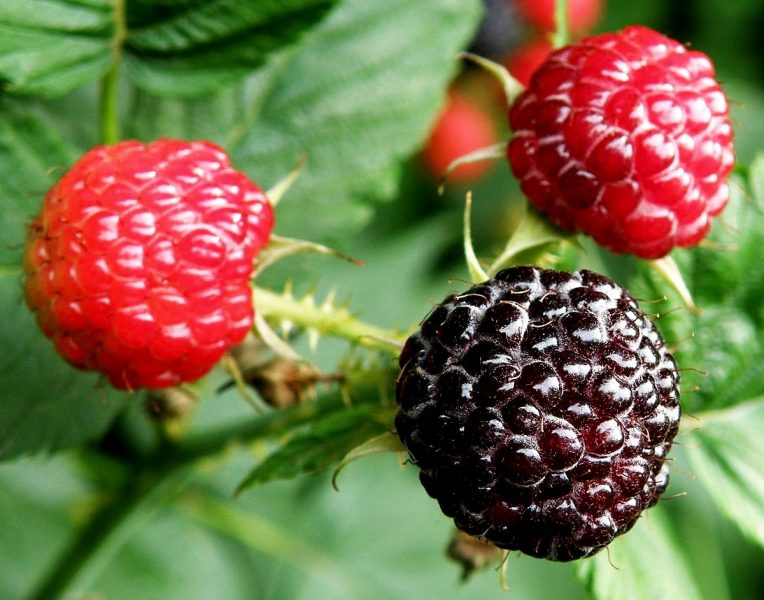
Even a beginner can take care and grow blackberry-like raspberries, since the culture does not require special attention.
Watering and mulching
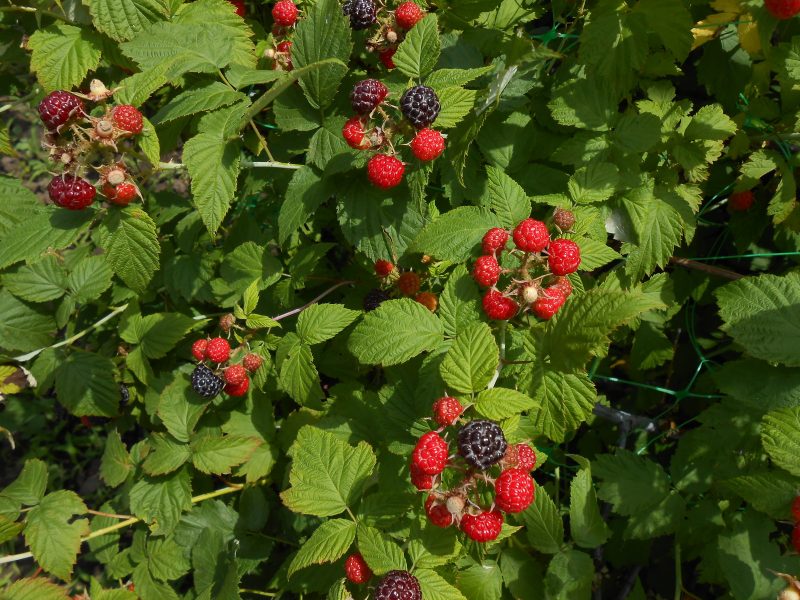
After disembarkation, the trunk circles are mulched with dry grass. Watering a drought-tolerant crop is carried out only during the period of filling berries to obtain the highest yield.
Raspberry garter and pruning
Since the bushes are rather tall, it is recommended to stretch trellises for raspberries. Plants should be cut twice: in June, the stems are shortened to a growth point, which stimulates the development of new fruit-bearing shoots, and in the autumn too long branches are cut off and dried ones are removed.
Top dressing

Raspberries can be fed with both organic and complex mineral fertilizers with a high phosphorus content.
Winter preparations
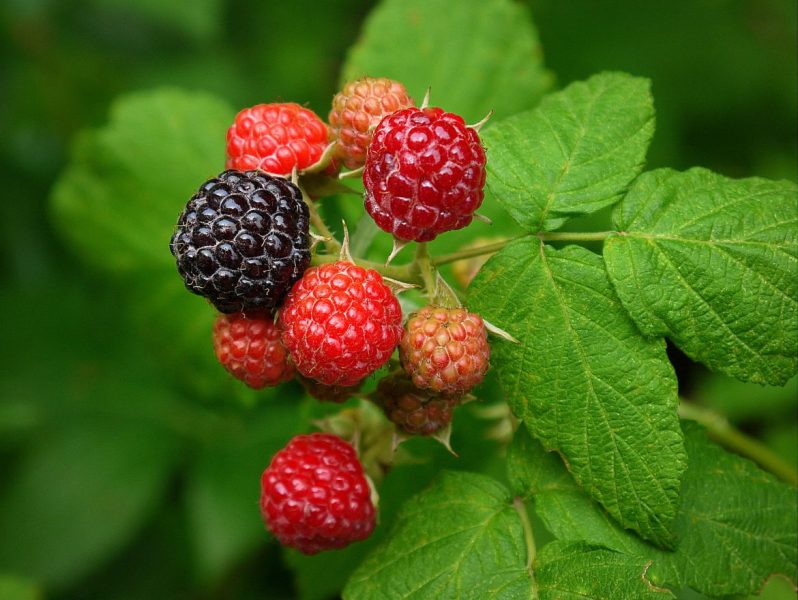
In areas with a mild climate, shoots of aronia can be left on the trellises, securely tied up. In regions with severe weather conditions, so that the bushes do not freeze, it is recommended to bend the branches to the ground, fixing them in this position with metal brackets. If there is a chance of snowy winters, then you can build an artificial shelter with the help of fir branches.
Pest and Disease Control

If the plant was struck by verticillus wilting, provoked by the wrong choice of predecessors or the purchase of low-quality material, then diseased bushes are destroyed. Due to rainy weather, fungal diseases that can be treated with fungicides can develop. Among raspberry pests there is a raspberry beetle, treatment against which must be carried out before the sap flow begins.
Methods of propagation of aronia raspberries
Raspberries are propagated by layering.
At the end of summer:
- The elongated branches are bent by an arc and pinned to the ground in special grooves 10 cm deep.
- Layers are dug in such a way that the growth point remains above the ground level.
- For winter, layering is insulated with sawdust.
- In spring, rooted shoots are separated from the maternal specimens.
Black raspberries and blackberries - what is the difference?
Many people, looking at the lush fruiting bushes with red and black berries, are at a loss about what kind of culture is in front of them.

The differences between blackberry-like raspberries and blackberries exist not only in agricultural cultivation:
- Berry shape - raspberries are more rounded in comparison with oblong blackberries.
- Detachment of the receptacle - when collecting blackberries, the berry has to be torn off along with the peduncle.
- The structure of the bush - blackberries have thicker, more compact bushes.
- Ripening dates - fruiting of raspberries is noted earlier due to the cold resistance of the crop, allowing it to bloom earlier.
- Shoots - the blackberries have strong green stems that can be covered with black spikes, while raspberries have lighter shoots with a touch and small spikes.
Thus, the original and very productive culture, due to its unpretentiousness, will surely appeal to the gardener who has chosen an extraordinary variety.












